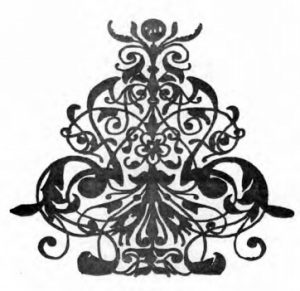Part IV: The Slovak Community of Cleveland
Early Societies
The new immigrant faced many problems: handling the unavoidable trauma of personal adjustment to a new land while enduring a painful separation from home and family ties; learning to cope with the ironic bigotry and bias which was also part of the American experience for many immigrants, experiencing social injustice and harship in his day-to-day work experiences. So, it was natural that the men began to group themselves into clubs and organizations of various sorts where they would seriously discuss common needs and interests. Out of these gatherings grew the incentive not only to undertake the building of local Slovak churches but also the realization to organize benefit societies for mutual assistance in time of sickness and disaster.
Since industrialists who employed immigrants offered no social services whatsoever (nor did the state or federal governments), the earliest arrivals banded together and created their own. As early as 1883 Slovaks in Bridgeport, Connecticut, and in New York City established fraternal-benefit societies. These were modeled on Old World craft guilds or societies of unskilled workers which had existed since the Middle Ages. Thier major purpose was to offer comfort through fellowship and financial aid in case of sickness, maiming, or death. By 1890 more than forty such societies existed in the growing Slovak communities of the Northeast. Meeting on Sundays in someone’s parlor, members of fraternities discoursed in their native languages, ate familiar food, and enjoyed the feeling of togetherness. Among the earliest societies established by the Slovak immigrants were these:
1883 — The First Slovak Health Benefit Society – New York City
1883 — St. John Society – Bridgeport, Connecticut
1884 — Slovak Roman Catholic Beneficial Society of St. Stephen – Cleveland, Ohio
1884 — St. Stephen Society – Passaic, New Jersey
1884 — Church and Health Benefit Society – Hazleton, Pennsylvania
1885 — Fraternity of the Sacred Heart – Houtzdale, Pennsylvania
1886 — Society of St. Stephen – Plymouth, Pennsylvania
1886 — Society of SS. Peter and Paul – Scranton, Pennsylvania
1887 — Society of Prince Rudolph – Bayonne, New Jersey
1887 — Society of St. Joseph – Yonkers, New York
1888 — First Coopers Mutual Aid Society – Bayonne, New Jersey
1888 — Society of SS. Cyril and Methodius – Minneapolis, Minnesota
1888 — Slovak Society of SS. Peter and Paul – McKeesport, Pennsylvania
Every local society developed in its own unique way, but the common unifying impulse came from the prompting to provide support and help in time of need. On the death of a member, a local lodge felt honor-bound to arrange for a becoming funeral. As a matter of fact, it was usually an impressive funeral. Uniformed lodge members assembled to pay their last respects. They marched to church and to the cemetery “in corpore” with flag and cross leading the procession and a band playing suitable music.
In the beginning, the organization of these societies was rather loose and somewhat insecure. Members paid 14 cents a month to cover administrative expenses, and every member contributed a suitable offering to meet the financial burden of sickness and burial as these sad occasions arose. Before long, however (1906), it became apparent that this was an impractical arrangement, for when troubles came in greater numbers, the call of charity to make repeated contributions to those in need became somewhat taxing. Wise leaders advised the lodges to adopt a more reliable and soundly efficient system. This idea gained further support and was endorsed from other areas too.

